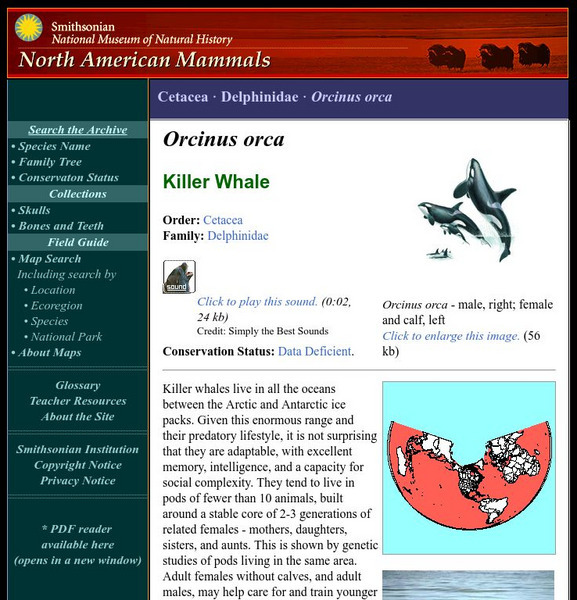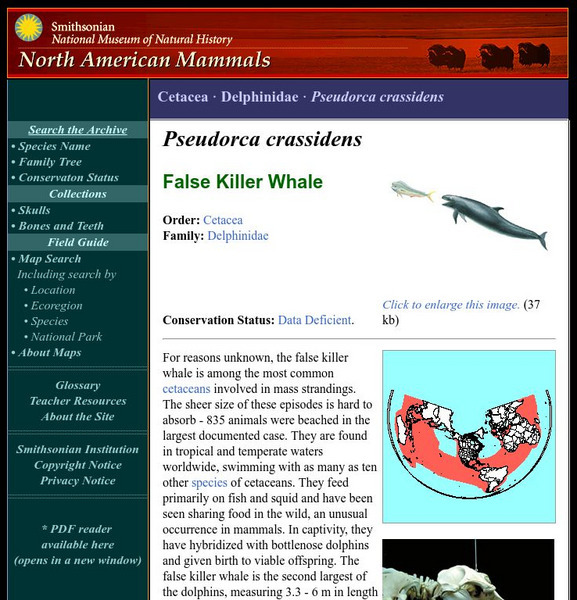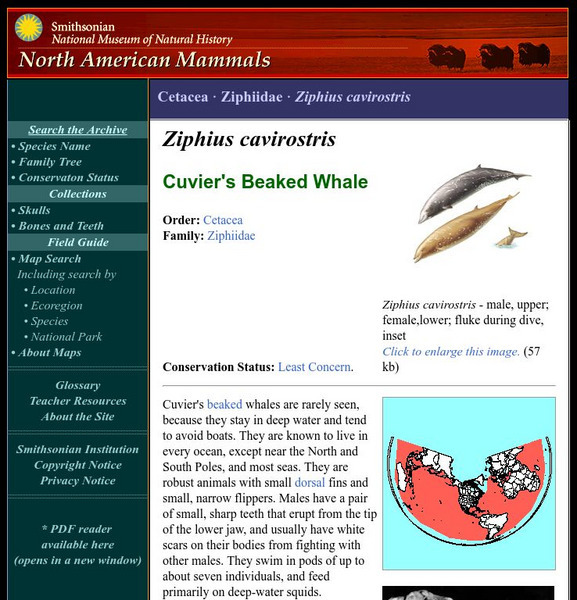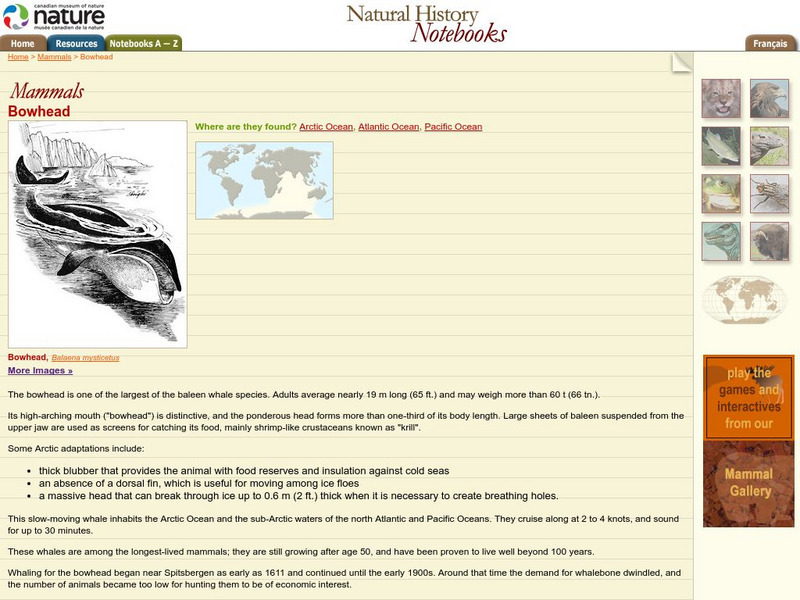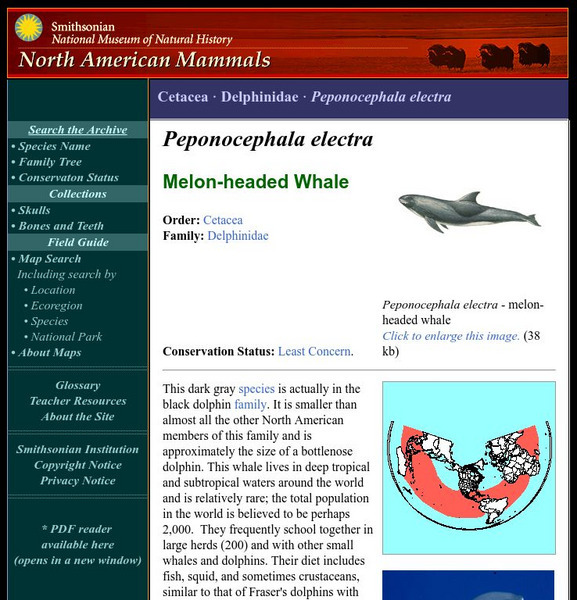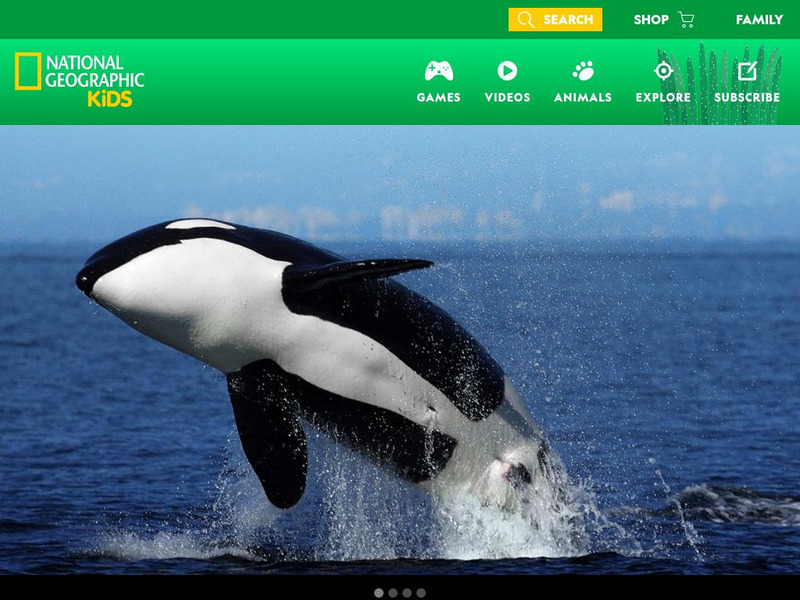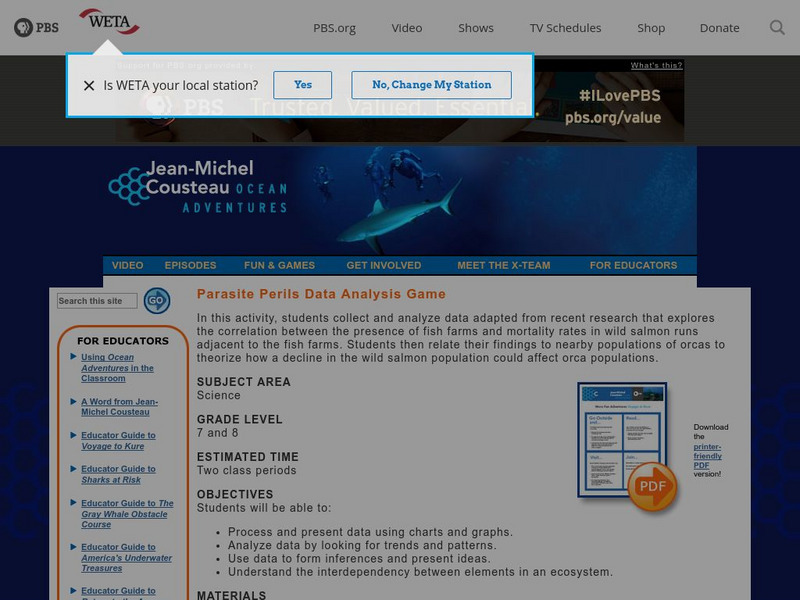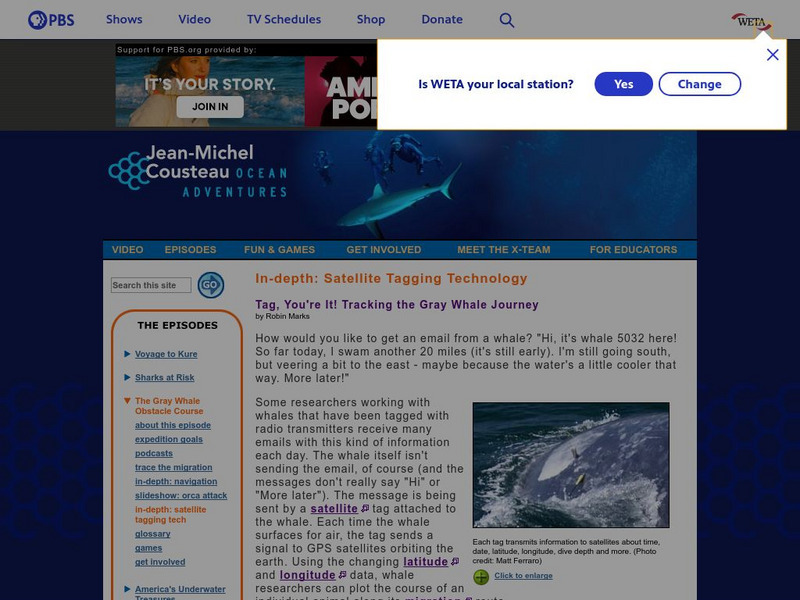Hi, what do you want to do?
Smithsonian Institution
National Museum of Natural History: American Mammals: Killer Whale
Killer whales live in all the oceans between the Arctic and Antarctic ice packs. Given this enormous range and their predatory lifestyle, it is not surprising that they are adaptable, with an excellent memory, intelligence, and a...
Smithsonian Institution
National Museum of Natural History: American Mammals: False Killer Whale
For reasons unknown, the false killer whale is among the most common cetaceans involved in mass strandings. The sheer size of these episodes is hard to absorb - 835 animals were beached in the largest documented case. Learn more about...
Smithsonian Institution
National Museum of Natural History: American Mammals: Cuvier's Beaked Whale
Cuvier's beaked whales are rarely seen because they stay in deep water and tend to avoid boats. They are known to live in every ocean, except near the North and South Poles, and most seas. Learn more about the Ziphius cavirostris, more...
Smithsonian Institution
National Museum of Natural History: American Mammals: Gray Whale
Gray whales are bottom feeders. They roll to one side and lower the lip to scour and siphon the bottom for tiny crustaceans, especially amphipods which are known as "sand fleas." Learn more about the Eschrichtius robustus, more commonly...
Smithsonian Institution
National Museum of Natural History: American Mammals: Humpback Whale
Humpback whales are among the best-studied cetaceans, yet they are still among the most mysterious. Among the mysteries are the reasons for their songs and the complex social behaviors that accompany them. Learn more about the Megaptera...
Blackdog Media
Classic Reader: "The Whale Cure" by Louis Becke
Sitting inside a deceased whale was once considered a way to cure rheumatism. This short story by Louis Becke centers around this concept. Read the full text on this site.
Blackdog Media
Classic Reader: "The Whale Tooth" by Jack London
Read the full text of Jack London's short story "The Whale Tooth" on this site.
Canadian Museum of Nature
Canadian Museum of Nature: Bowhead Whale
The bowhead whale is on the endangered list as efforts continue to be made to bolster its population. Details about this Arctic animal can be found here.
Smithsonian Institution
National Museum of Natural History: American Mammals: Bowhead Whale
Bowheads live in icy Arctic seas. A smooth back with no dorsal fin, a blowhole placed in a high crown at the top of the head, and a thick layer of blubber for insulation equip them for this environment. Learn more about the Balaena...
Smithsonian Institution
National Museum of Natural History: American Mammals: Melon Headed Whale
This dark gray species is actually in the black dolphin family. It is smaller than almost all the other North American members of this family and is approximately the size of a bottlenose dolphin. Learn more about the Peponocephala...
Other
Fishin for Facts Library
A comprehensive site that includes a wealth of information on whales, sharks, penguins and squid.
Smithsonian Institution
Smithsonian National Zoo: Zoogoer Magazine: Killer Cultures
This article covers a variety of topics related to Killer Whales including Killers on the Move, A Tale of Two Tribes, Deciphered Dialects, Eyes on the Genes, and more.
Other
Newfoundland's Grand Banks: Basque Whalers in Southern Labrador 1540 1610
A description of early whaling by Basque sailors off the coast of Labrador.
The BIG zoo
The Big Zoo: Killer Whale
Virtual zoo site contains some interesting information regarding this sought after creature. Provides a physical description as well as information regarding their diet, habitat, social structure, birth and offspring and senses.
NOAA
Noaa: Endangered Whales
"There are currently seven species of cetaceans in U.S. waters that are protected under the Endangered Species Act." This site provides links to each species as well as provides colorful and engaging pictures.
E-learning for Kids
E Learning for Kids: Science: Bay of Whales: Calculating Speed
Amelia is a researcher. She studies the speed of animals. Join her in Antarctica to help her figure these calculations.
National Geographic Kids
National Geographic Kids: Animals: Orcas
Orcas, more commonly known as killer whales, are featured on this multimedia site. These video clips, audio clips, photographs and facts will be very beneficial to students doing research projects.
NOAA
Noaa: Endangered Species Origami [Pdf]
Discover facts about endangered whales and turtles. Fold paper to make Origami models of these two creatures.
PBS
Pbs Learning Media: The Wreck of the Corinthian
This interactive activity, adapted from material provided by the ECHO partners, tells the story of the wreck and towing of the whaling ship Corinthian using three narrative sources.
PBS
Pbs Jean Michel Cousteau: Parasite Perils Data Analysis Game
This lesson is designed for Grades 7 and 8 and has students gather and analyze data from research on salmon populations and the impact of the sea louse on their survival rates. They then apply their findings by looking at how orca whale...
PBS
Pbs: Ocean Adventures: Satellite Tagging Technology
Discover how researchers have been working with whales that have been tagged with radio transmitters to receive information that aids in their research of whale behavior.
Curated OER
Tourism New Brunswick: The Bay of Fundy Whales
Many different kinds of whales can be found in the Bay of Fundy, some of them only occasionally. Each of the whales is profiled here. There are also whale songs, whale stories and news items, information about risks to them and measures...
Curated OER
Blue Whale Breaks the Surface Off Alaska Coast
National Public Radio reports on the blue whale, which has been on the endangered species list for almost 40 years. Find out why a recent siting off the coast of Alaska has given researchers some cause for optimism.
Other popular searches
- Killer Whales
- Blue Whales
- Humpback Whales
- Baleen Whales
- Marine Science Whales
- Orca Whales
- Gray Whales
- Uses of Whales
- Language Arts Whales
- Beluga Whales
- Saving Right Whales
- Toothed Whales





